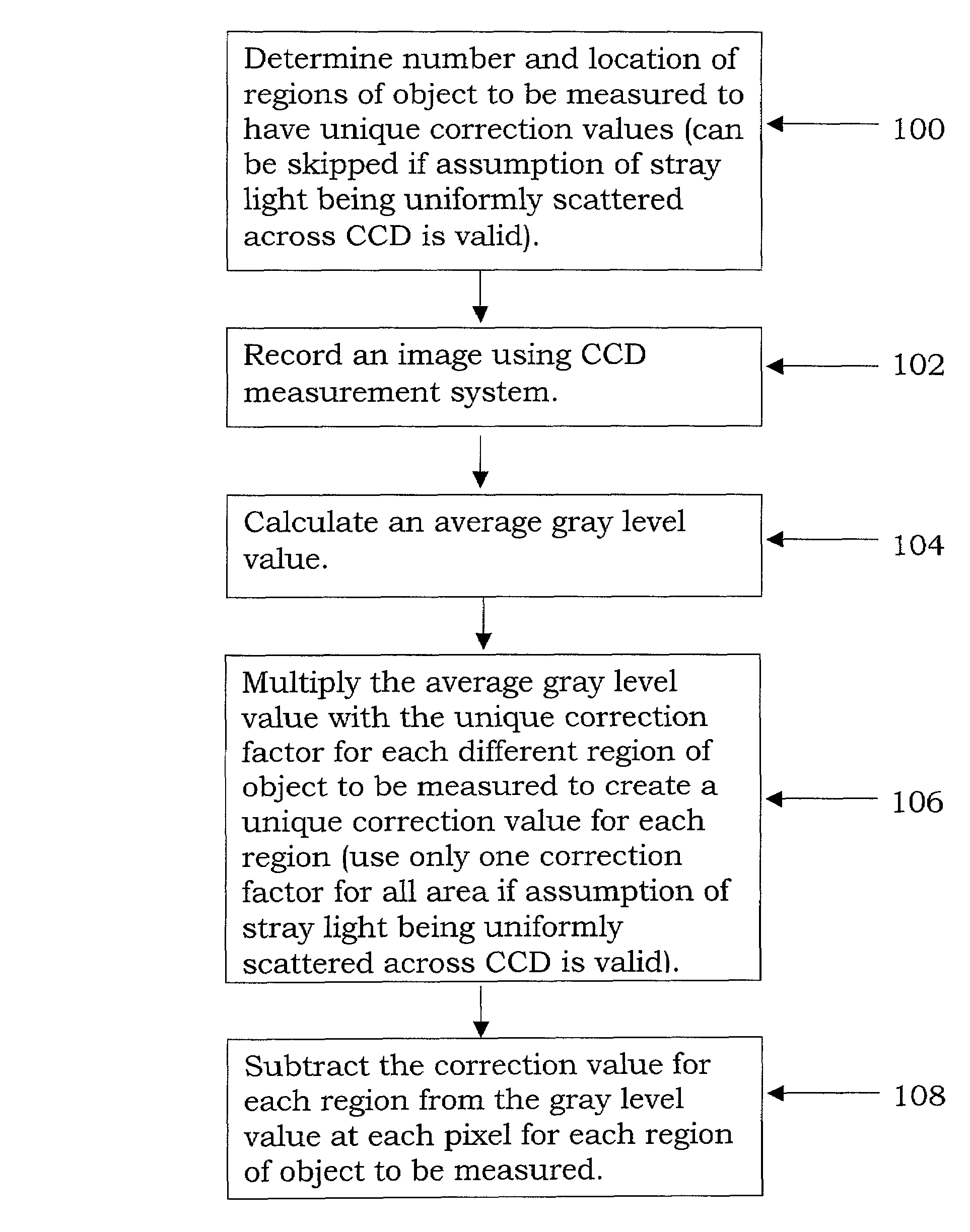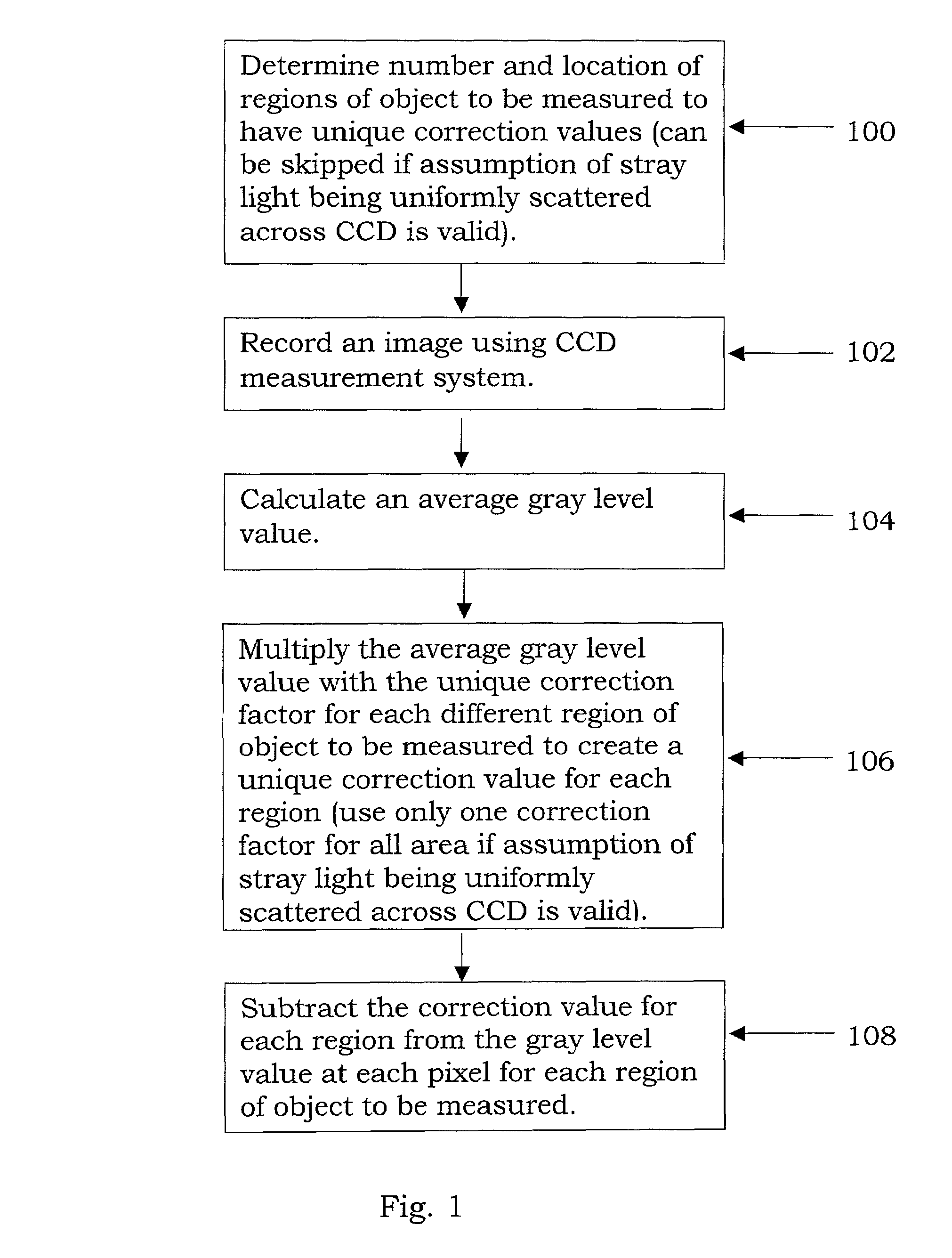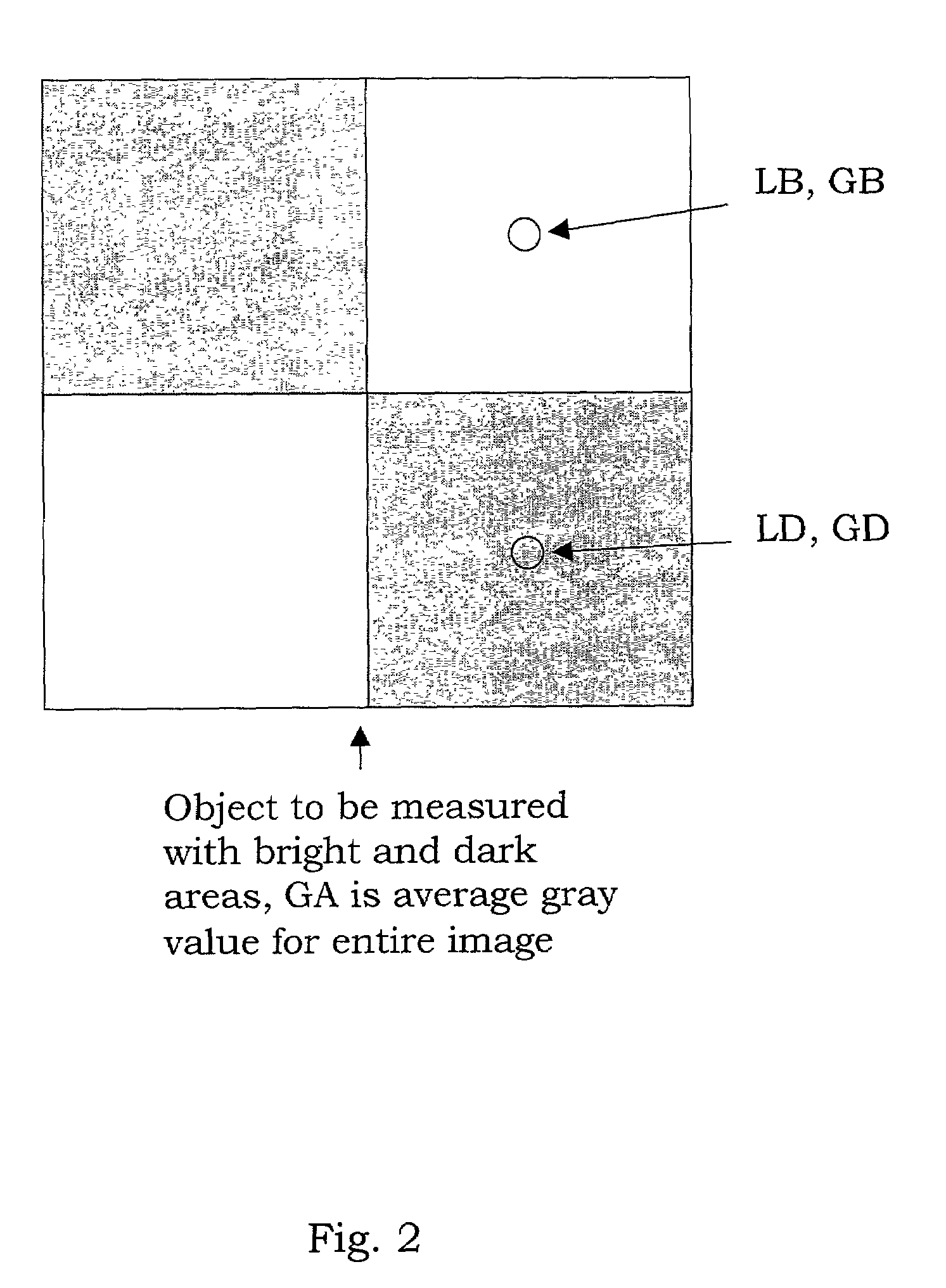Stray light correction method for imaging light and color measurement system
a correction method and light technology, applied in the field of stray light correction method for imaging light and color measurement, can solve the problems of stray light contributing to inaccurate relative light levels for a specific filter, measurement of light levels in darker regions of objects to be higher than they actually are, and particular color coordinates are not accurate at that particular location, so as to eliminate stray light effect, increase the gray level value, and eliminate the effect of stray light
- Summary
- Abstract
- Description
- Claims
- Application Information
AI Technical Summary
Benefits of technology
Problems solved by technology
Method used
Image
Examples
Embodiment Construction
[0024]By way of background, to eliminate the stray light effect, an assumption is made according to the characteristics and the sources of the stray light in the present invention. The assumption comprises that the amount of stray light is directly proportional to the brightness of light incident on the solid-state light detector array, that is, the average gray level value measured by the solid-state light detector array. Because the stray light is partially caused by the lens and partially caused by the optional elements in the imaging light and color meter used to modify the spectral power distribution of incoming light for each instance of irradiation of the solid-state light detector array in a single color measurement, the amount of stray light is dependent on both the lens and the optical elements. Examples for the optical elements include a plurality of filters, a single tunable color filter, a plurality of tunable color filters, an interferometer, an interference grating, a...
PUM
 Login to View More
Login to View More Abstract
Description
Claims
Application Information
 Login to View More
Login to View More - R&D
- Intellectual Property
- Life Sciences
- Materials
- Tech Scout
- Unparalleled Data Quality
- Higher Quality Content
- 60% Fewer Hallucinations
Browse by: Latest US Patents, China's latest patents, Technical Efficacy Thesaurus, Application Domain, Technology Topic, Popular Technical Reports.
© 2025 PatSnap. All rights reserved.Legal|Privacy policy|Modern Slavery Act Transparency Statement|Sitemap|About US| Contact US: help@patsnap.com



